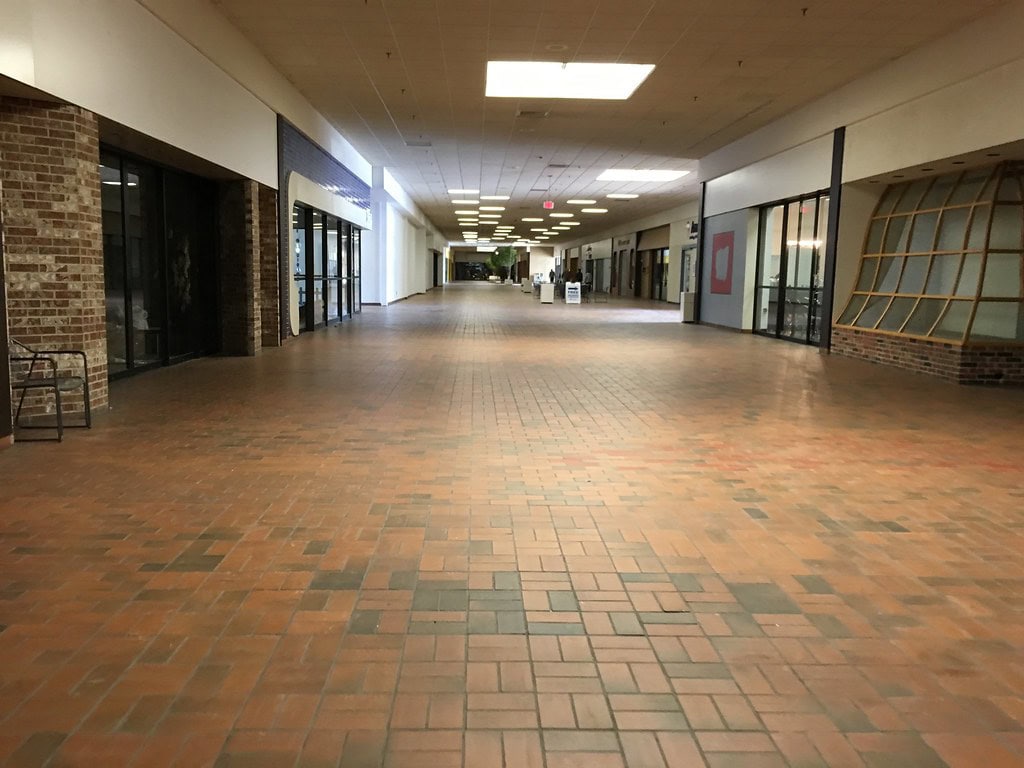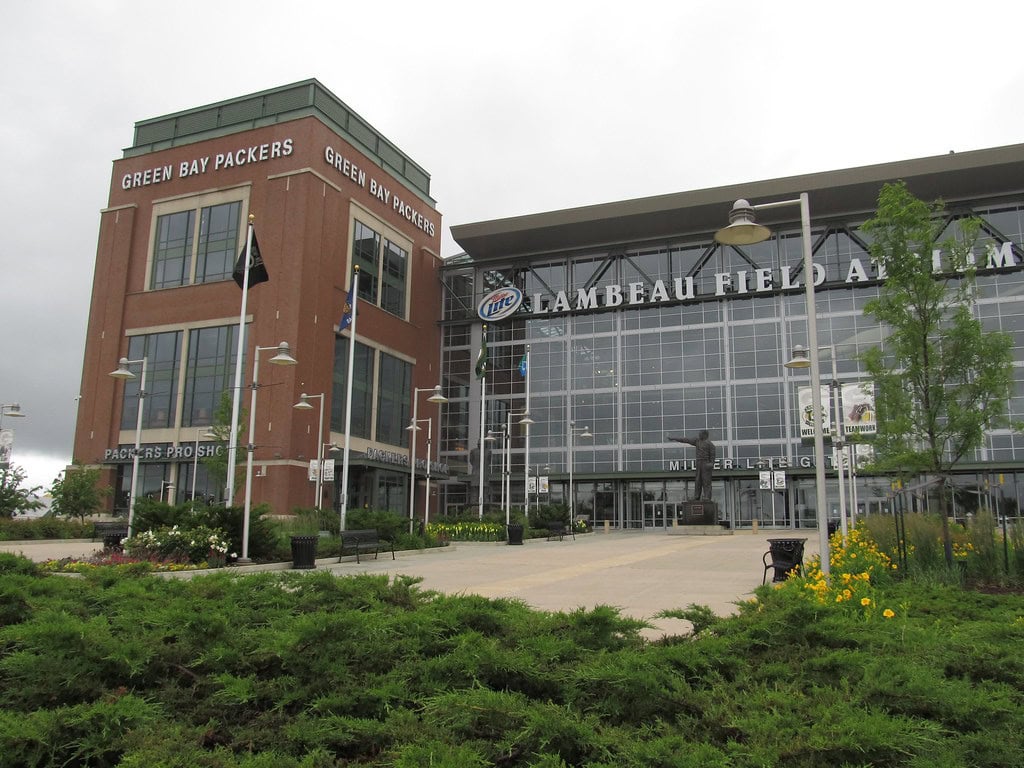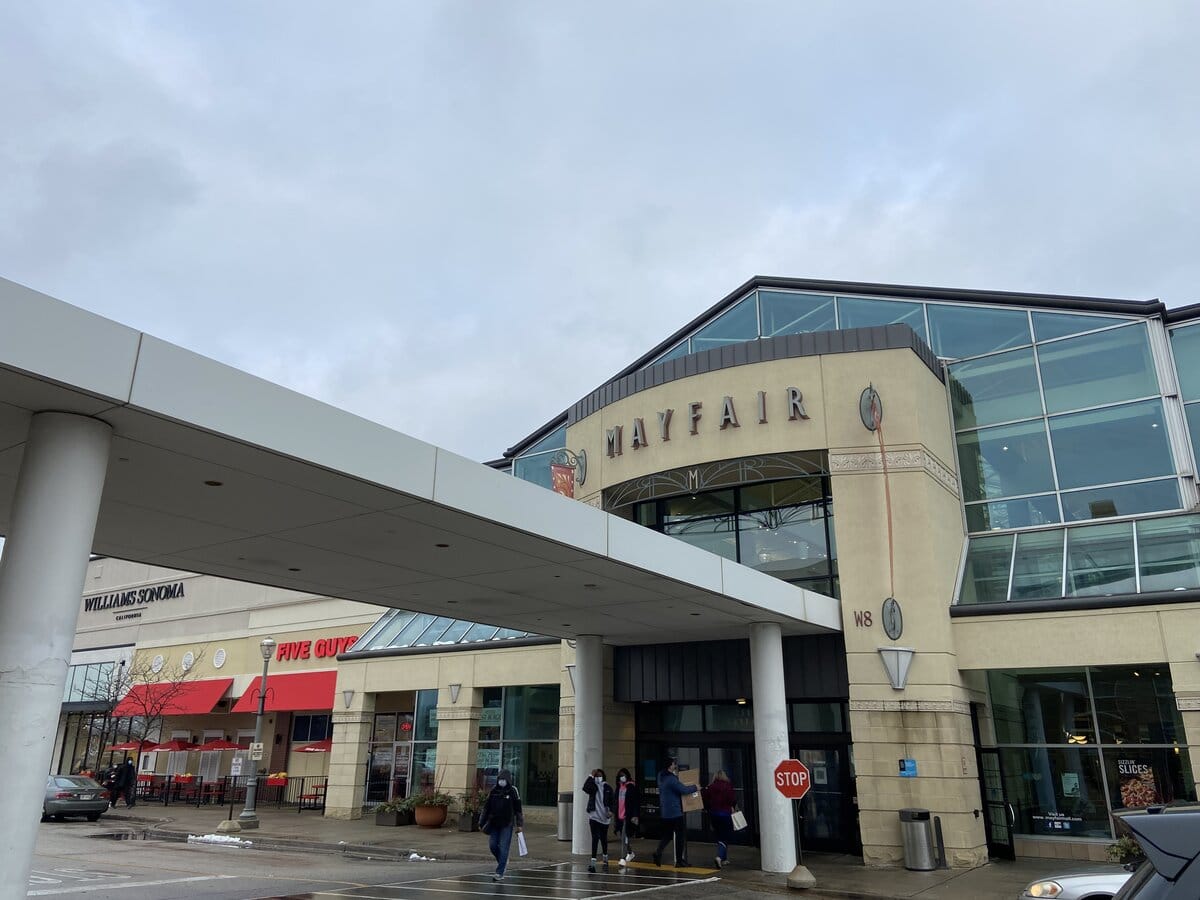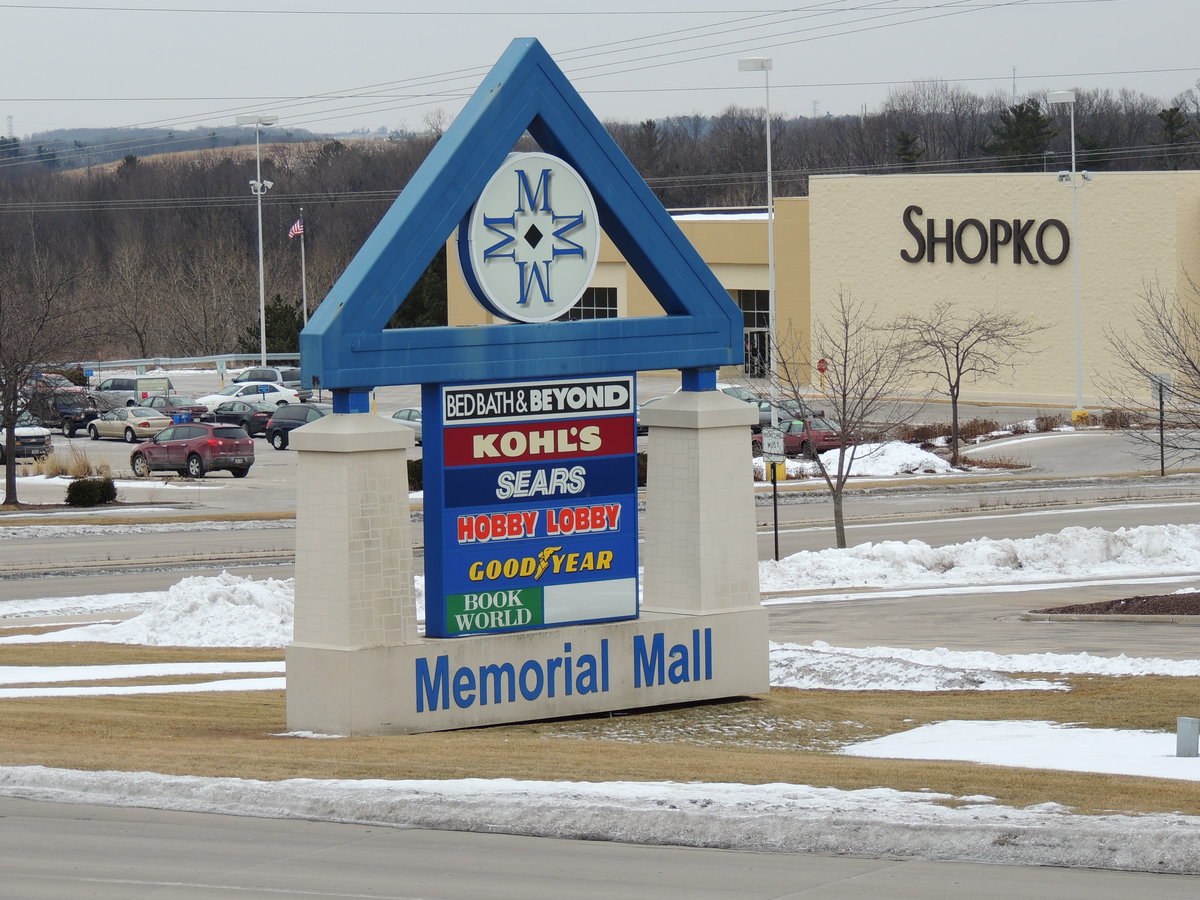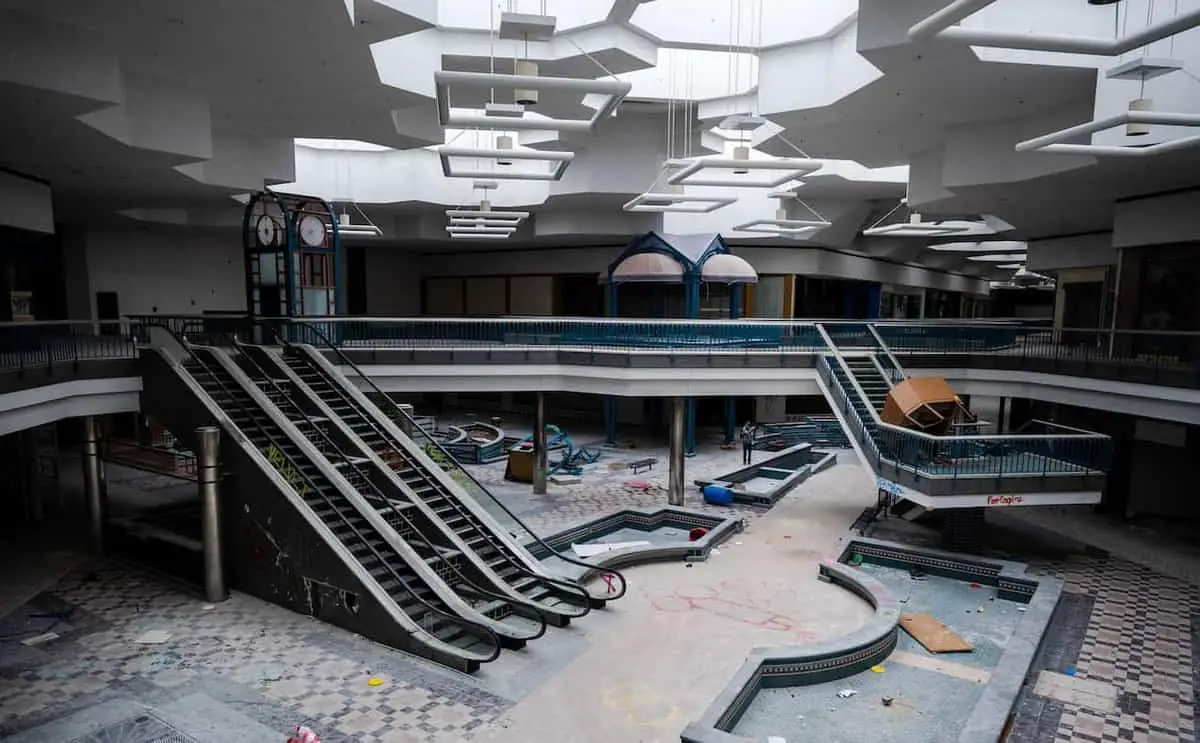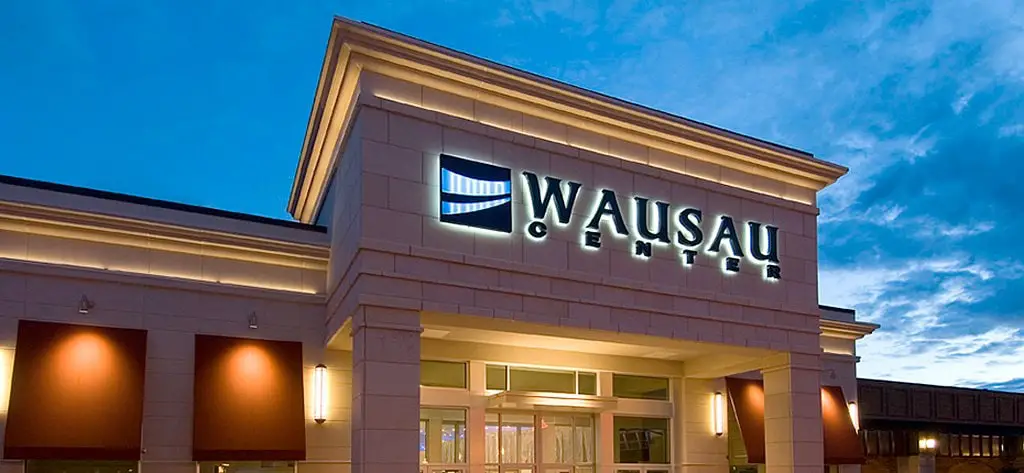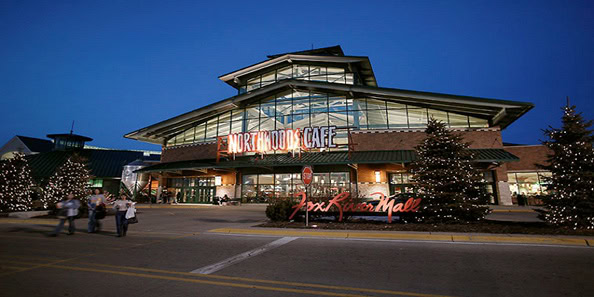A Mall That Built Its City
A metal-rimmed sign stands beside Mayfair Road, angled toward heavy traffic and backed by a plain tower of glass and brick. The letters don't blink or hum. They mark a space that many locals could find without looking.
Inside the mall, two floors split around a wide atrium, and at the edges sit names people know by logo more than history: Macy's, Nordstrom, AMC.
Yet the floors, the rails, and the structure behind all this still reflect a design built in 1958 when Milwaukee wanted its own modern center. And for Wauwatosa, it was more than retail.
Somewhere between suburban expansion and regional pride, Mayfair Mall became part of how people mapped their lives, first jobs, Friday movies, Cheesecake Factory birthdays, and winter afternoons out of the wind.
Today, it's still the largest enclosed shopping mall in Wisconsin. In a list of things to do in Milwaukee, it keeps showing up. The names change, but the structure remembers.
What is the history of Mayfair Mall since it opened in 1958?
Construction started in 1956. Hunzinger Construction Company took on the contract, working from plans approved by developer Kurtis Froedtert. Two years later, work wrapped up.
Gimbels opened its doors first on the south end in September 1958, followed closely by Marshall Field's on the north end in February 1959.
In between those anchors, the central 960-foot corridor opened as an open-air pedestrian mall on October 9, 1958.
At the start, Mayfair Mall offered more than seventy stores centered around three distinct corridors, North Mall, Central Park, and South Mall, each with a different color scheme.
The Central Park section carried its name literally. Shoppers walked past trees, benches, and picnic tables. Above all this, in January 1959, a six-story Professional Building opened on the site. Office tenants moved in. It wasn't only a mall.
The layout reflected the moment's urban experiments. Outdoor shopping villages, like those in California, met Midwest practicality.
Built for cars but arranged for walking, the Mayfair Shopping Center helped set the tone for how Wauwatosa would grow around it.
Unlike most mid-century retail hubs, this one came with offices, landscaping, and a skyline.
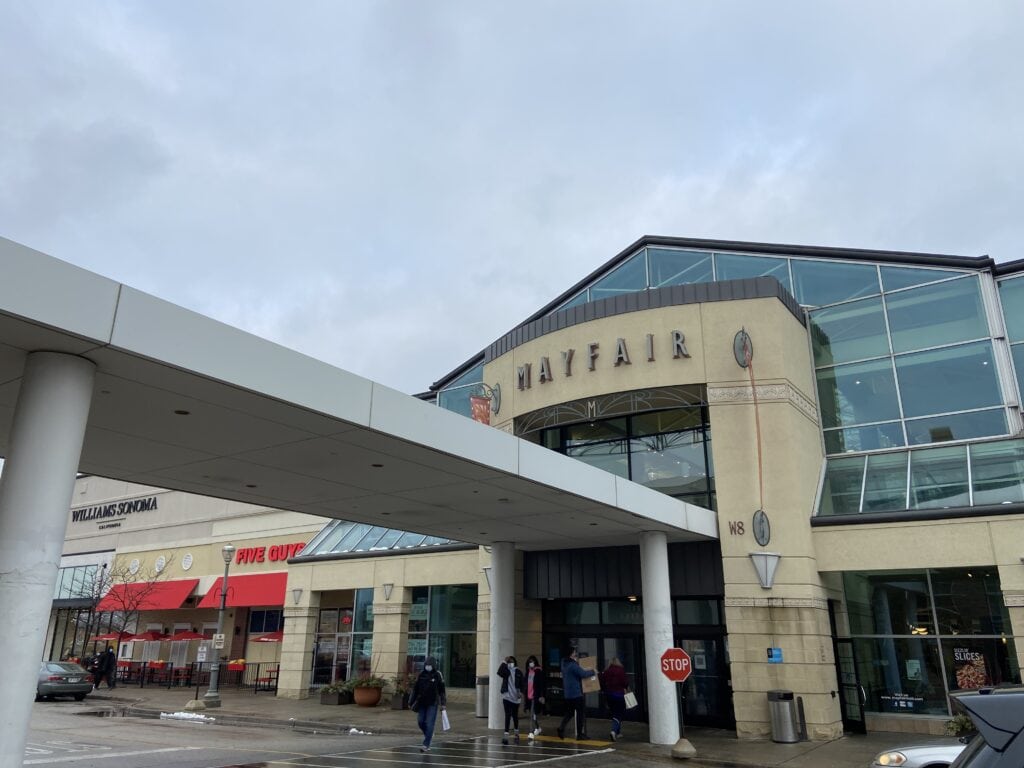
How did Mayfair Mall evolve during the 1970s and 1980s?
By the early 1970s, open-air layouts were falling out of favor in the Upper Midwest. In January 1973, crews began enclosing Mayfair's outdoor walkways.
The work was completed by October 11 of that year. That shift turned the mall into a climate-controlled space with full-season retail appeal.
Around the same time, an interior feature called The Bazaar was added. It was built where Central Park had once stood.
That space, originally designed with natural trees and benches, was now occupied by a smaller arcade concept intended to simulate the feel of a street market.
New offices followed. In 1975, the mall's owner added a dedicated office tower beside the retail core.
Two years later, in November 1977, construction crews broke ground on a second office tower. Those additions pushed Mayfair Mall past its retail roots, reinforcing its role as a broader commercial site.
By 1986, the mall was under renovation again, this time with $15 million behind it. The original ice rink was removed, and The Bazaar interior arcade was taken apart.
In its place came a full-height food court, along with 78,000 square feet of new retail space on the upper level.
That phase also paved the way for Boston Store, which moved in by 1987. It took over the former Gimbels space after the brand was phased out regionally.
What major retail changes happened from the 1990s to the 2010s?
General Growth Properties acquired Mayfair Mall in 1998. Their strategy leaned on mixed-use anchors, larger national chains, and lifestyle tenants.
Barnes & Noble arrived the next year, near the mall's northwest end, along with a new cinema space.
In 2000, developers expanded the second level across more of the building, opening up roughly 100,000 additional square feet for retail tenants and new restaurants.
That layout helped reconfigure circulation patterns in the building and pushed the food court further into a central role.
By the mid-2000s, two more destination retailers joined. Crate & Barrel opened in 2005 at the front of the main entrance. Its footprint stood apart from the enclosed mall yet remained tied to foot traffic patterns.
Around the same period, the former Marshall Field's became a Macy's as part of a nationwide rebrand by Federated Department Stores in 2006.
In 2015, the mall added two major national players. The Container Store opened first, bringing specialty storage and organization inventory to a new audience.
Later that year, on October 23, Nordstrom opened its first full-line department store in Wisconsin.
That anchor targeted higher-spending consumers and was considered a retail milestone for metro Milwaukee at the time.
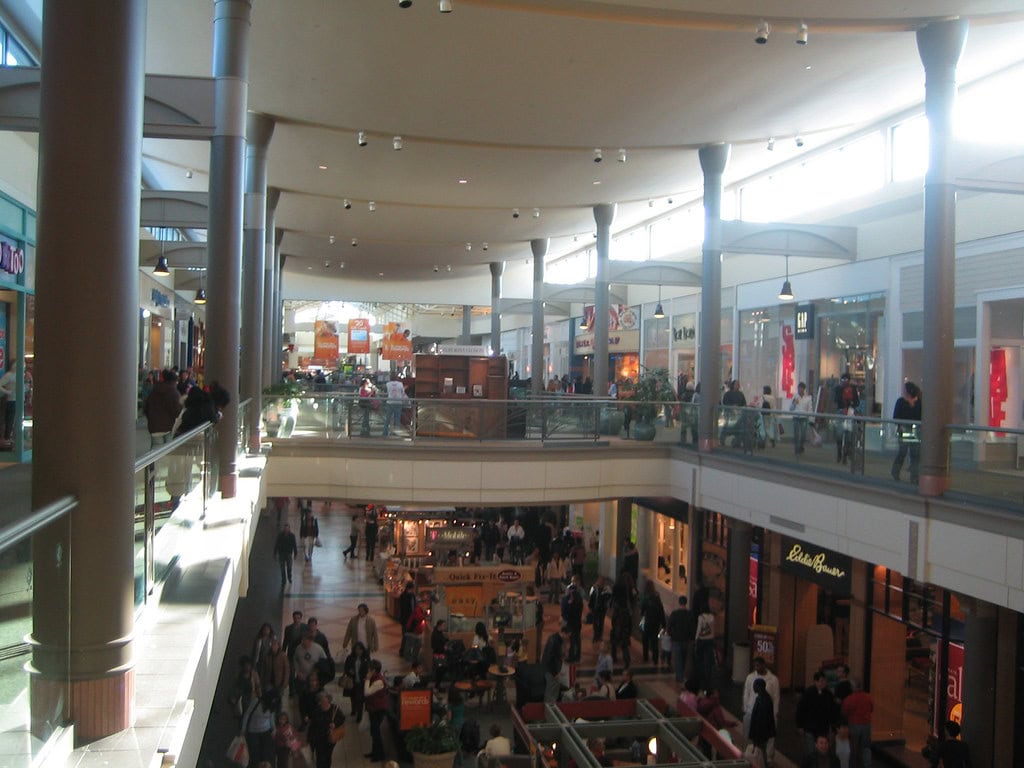
Why did Boston Store close, and what followed its vacancy?
The Boston Store at Mayfair Mall closed in August 2018. The closure wasn't specific to Wauwatosa. It came as part of Bon-Ton's liquidation following a bankruptcy filing under Chapter 11.
Mayfair's location had once been a stronghold for the brand, anchoring the mall since 1987 after replacing Gimbels.
But retail was shifting, and when Bon-Ton's assets were auctioned off, the Mayfair Mall lease fell into default.
For several years, the anchor space sat empty. The mall continued operating, but the former Boston Store location remained shuttered.
Foot traffic pulled toward Nordstrom and AMC on one end, with Macy's holding the other. By 2022, the City of Wauwatosa had begun talks to reacquire the site.
Eventually, city officials moved forward with a purchase through auction channels, securing control of the parcel for redevelopment discussions.
That public acquisition opened the door to broader planning. Early concepts floated a mix of retail and housing. Yet, for a while, the square footage just sat, visible but unused.
For a center that once boasted seven full anchors, having that much vacant space raised fresh questions about what kind of mall Mayfair Mall would be going forward.
What are the $400 million residential redevelopment plans at the site?
In December 2024, Barrett Lo Visionary Development released its full design concept for a major redevelopment of land tied to the former Boston Store.
The plan, backed by the City of Wauwatosa and aided by tax-increment financing, called for two residential towers with mixed retail below.
The larger of the two was drawn at 20 stories, housing 256 apartment units. The second, a 16-story structure, would contain another 206 units. Combined, they were expected to introduce nearly 900 new residents to the area.
These weren't just concept sketches. The city had approved the project back in September 2023. Barrett Lo's plan was refined in 2024, and site prep is anticipated to begin in 2025.
Officials described a 10 to 12-year construction timeline for full buildout, with phased occupancy possible depending on contractor schedules and leasing trends.
Parking garages, pedestrian plazas, and new commercial space were all worked into the ground-level footprint. The city estimated its financial support to be roughly $58 million through future tax district revenues.
This project didn't replace the mall, but it wrapped into the broader strategy to anchor new housing and service-sector space alongside established retail infrastructure already in place at Mayfair Mall.

Is Scheels replacing the former Boston Store as an anchor tenant?
In February 2025, Wauwatosa officials confirmed that Scheels would occupy the former Boston Store site at Mayfair Mall.
The plan was more than a concept; it came with an anchor lease and a projected opening in spring 2027.
The retailer intends to demolish the old Boston Store entirely and rebuild a two-level structure totaling 210,000 square feet.
That square footage places it among the largest of Scheels' locations nationwide.
The site isn't being repurposed for apartments, offices, or civic use. It's a retail buildback, full service, full footprint.
Scheels will include specialty departments for golf fittings, archery setups, a walk-in candy store, a café, and an arcade space.
These aren't side attractions. They're part of a strategy to lengthen customer dwell time and compete with experience-based formats.
According to city filings and internal development plans, the project is expected to generate over 500 permanent jobs. Demolition prep began behind the scenes in early 2025 as public discussions moved into formal zoning review.
For Mayfair Mall, that meant one of its longest-standing anchor vacancies was finally being cleared and reprogrammed for active commercial use.

How are Wauwatosa officials and residents responding to the redevelopment?
The city's support for the Barrett Lo project and Scheels development came with both enthusiasm and skepticism. Wauwatosa committed public financing tied to future tax growth from the site.
However, officials faced pushback from some residents who questioned whether those subsidies would deliver long-term housing affordability.
At a public meeting in early 2025, developers acknowledged that the residential units would enter the market as luxury rentals.
So, highly likely that Mayfair towers would be priced well above workforce levels.
City leaders described the project as part of Wauwatosa's effort to build a second "downtown." They framed it as a move away from car-only design and toward walkable, transit-served density.
Yet even among supporters, the question lingered: who, exactly, the new Mayfair was being built to serve, and whether commercial reinvestment could rebalance the broader housing market.
🍀

